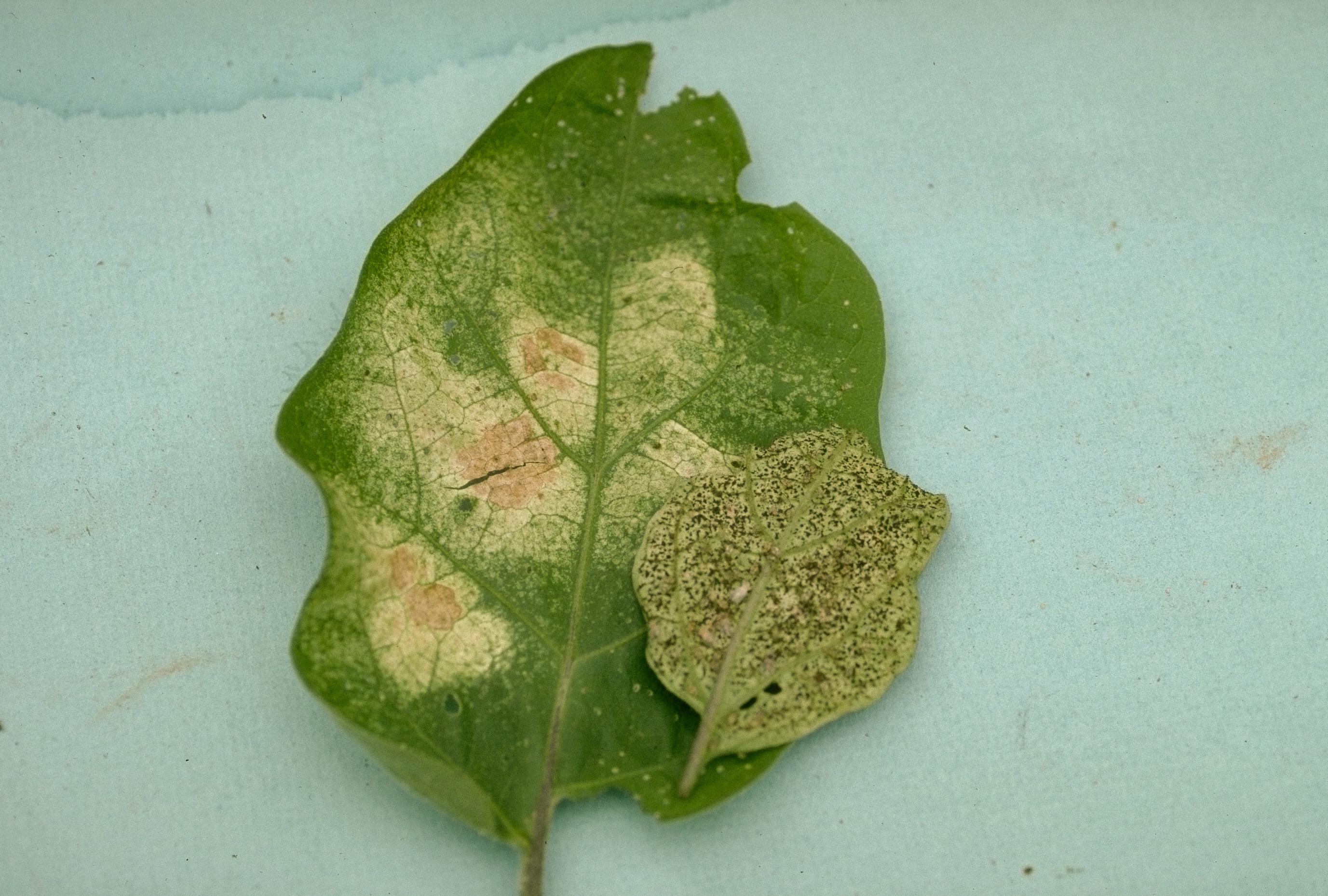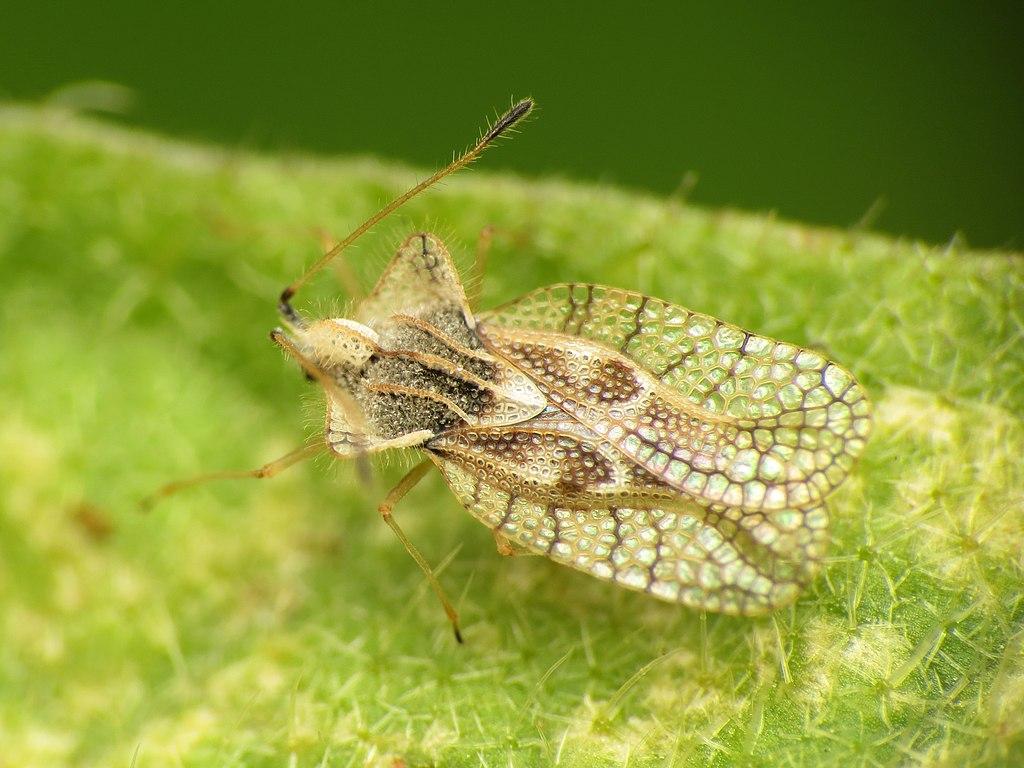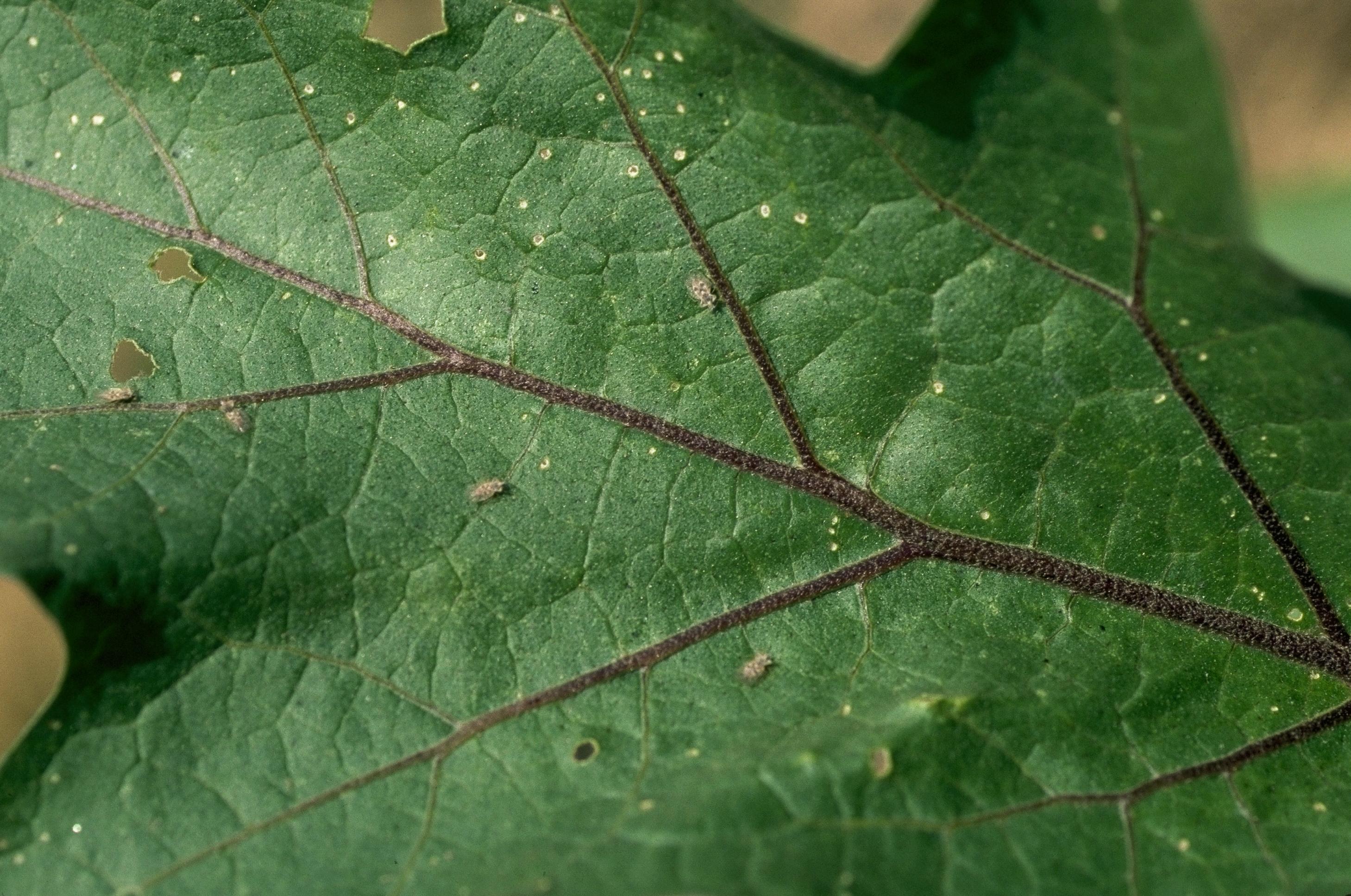Whitening of eggplant leaves

Appearance
- The lace bugs themselves are not that noticeable but their feeding damage is.
- They are dark brown around the head and have lacey, well-veined wings.
Life cycle/habits
- Adults overwinter in nearby weeds and garden debris. They become active in May.
- Females lay eggs on the undersides of leaves. Adults develop quickly and disperse to nearby plants.
- Potentially multiple generations per season.
Host plants
- This lace bug feeds on eggplant primarily but is also occasionally found on other members of the Solanaceae family- tomato, potato, etc.
Signs/symptoms
- Whitening of eggplant leaves.
Monitoring
- Inspect plants closely, especially the undersides of the leaves, for signs of this pest if leaves become stippled or begin to fade and lose their green color.
Prevention/control
- Apply ultra-fine horticultural oil or insecticidal soap to control damaging populations of this occasional pest. Be sure to direct the spray to the upper and lower leaf surfaces.

Closeup of adult eggplant lacebug. Credit: Katja Schulz, Creative Commons Attribution 2.0 Generic
